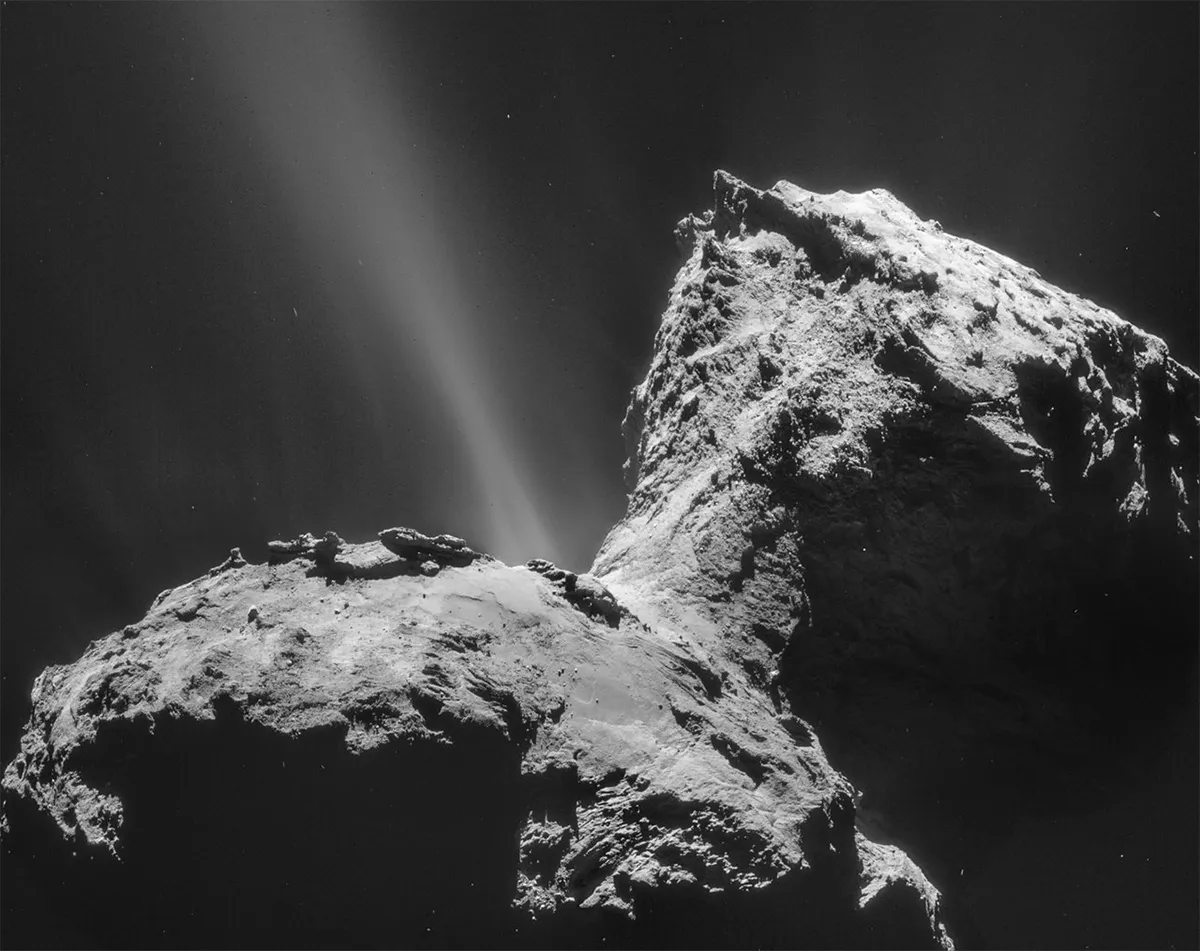The James Webb Space Telescope has mapped gases spewing from one of many ancient Solar System relics orbiting between Jupiter and Neptune.
Known as 'centaurs', these small icy bodies are leftovers from the formation of the Solar System 4.6 billion years ago.
Read more

Centaurs are former trans-Neptunian objects – meaning they once resided beyond the orbit of Neptune, the most distant planet from the Sun – but have been nudged between Jupiter and Neptune by subtle gravitational influences over millions of years.
Eventually, centaurs may even become short-period comets, the type that orbit close to Earth and regularly grace our skies as an observable object.

How Webb studied the gassy centaur
The James Webb Space Telescope's NIRSpec (Near-Infrared Spectrograph) instrument was used to gather data on one of these centaurs, known as 29P/Schwassmann-Wachmann 1 (29P for short).
29P is known for its highly active and regular outbursts of gas and other materials.
These outbursts vary in intensity every six to eight weeks, making 29P one of the most active objects in the outer Solar System.
Using data gathered by Webb, the astronomers discovered a new jet of carbon monoxide (CO) and previously unseen jets of carbon dioxide (CO2) gas.
This is providing new clues about the composition of 29P's nucleus and centaurs in general.
By using Webb to map gases erupting from the centaur, astronomers can learn more about 29P, but also about the formation and evolution of the Solar System.

Why study centaurs?
It's no surprise centaurs are named after their namesakes in Greek mythology.
The mythological centaurs are half-human, half-horse hybrids, and astronomical centaurs are similarly hybridic.
These icy bodies are in a transitional stage, sharing characteristics with both Kuiper Belt objects at the edge of the Solar System and short-period comets, the latter of which orbit the Sun and are often visible from Earth.
Astronomers are keen to understand more about centaurs' compisition, why they spew so much gas and how they act like a link between the frozen bodies of the outer Solar System and evolved comets.
"Centaurs can be considered as some of the leftovers of our planetary system’s formation," says Sara Faggi of NASA’s Goddard Space Flight Center in Greenbelt, Maryland, and American University in Washington, DC, lead author of the study.
"Because they are stored at very cold temperatures, they preserve information about volatiles in the early stages of the Solar System.
"Webb really opened the door to a resolution and sensitivity that was impressive to us — when we saw the data for the first time, we were excited. We had never seen anything like this."

Studies of Centaur 29P
Previous radio wavelength observations of centaur 29P showed a jet that's pointed toward the Sun, composed of CO.
Webb detected the jet emanating from 29P and searched for other chemicals, including water (H2O) and CO2.
Astronomers say CO2 is one of the main forms in which carbon is stored throughout the Solar System.
The authors of this study say there was no indication of water vapour detected in the atmosphere of 29P by Webb.
Perhaps this is due to the extremely cold temperatures in the outer Solar System, where it resides.
Spectral data from Webb revealed two jets of CO2 from 29P emanating in the north and south directions, and jet of CO pointing north.
The Webb analysis marks the first definitive detection of CO2 in Centaur 29P.
Astronomers created 3at D model of the jets and found they are coming from different regions on the centaur’s nucleus.
This suggests suggests 29P's nucleus may a mixture of distinct objects with different compositions.

More observations needed
"The fact that Centaur 29P has such dramatic differences in the abundance of CO and CO2 across its surface suggests that 29P may be made of several pieces," says Geronimo Villanueva, co-author of the study at NASA Goddard.
"Maybe two pieces coalesced together and made this centaur, which is a mixture between very different bodies that underwent separate formation pathways.
"It challenges our ideas about how primordial objects are created and stored in the Kuiper Belt."
"We only had time to look at this object once, like a snapshot in time," says Adam McKay, a co-author of the study at Appalachian State University in Boone, North Carolina.
"I’d like to go back and look at Centaur 29P over a much longer period of time. Do the jets always have that orientation? Is there perhaps another carbon monoxide jet that turns on at a different point in the rotation period?
"Looking at these jets over time would give us much better insights into what is driving these outbursts."
Read the full paper at www.nature.com/articles/s41550-024-02319-3

